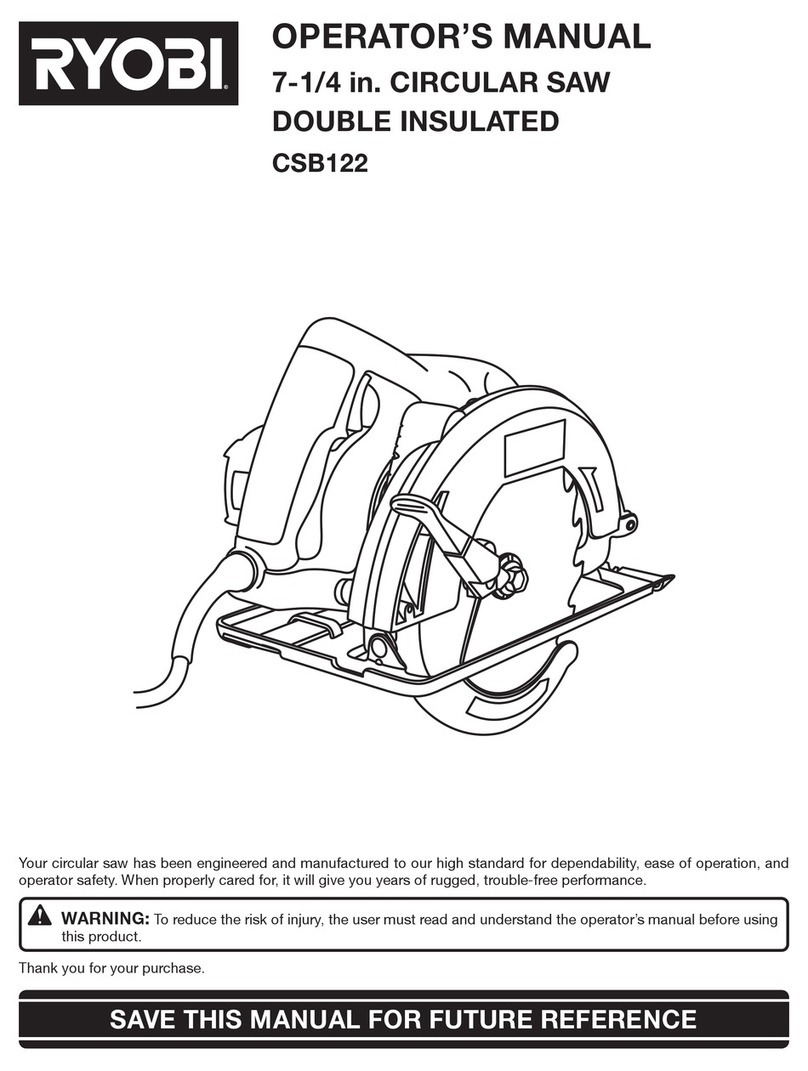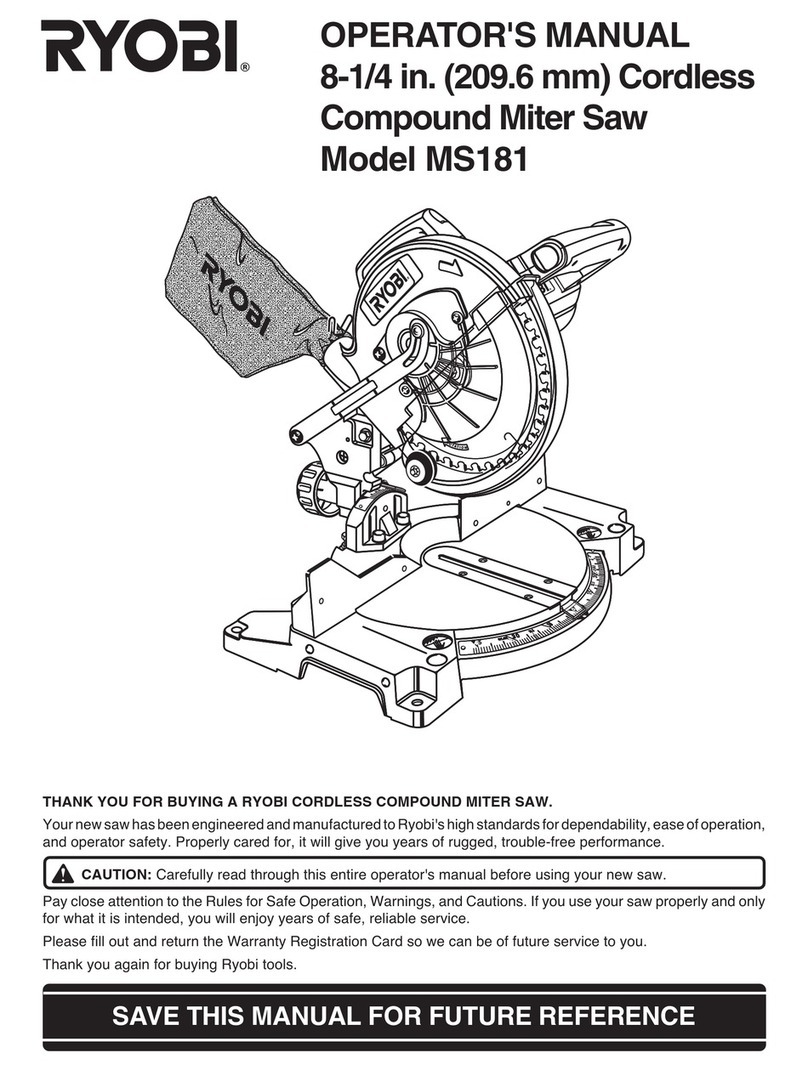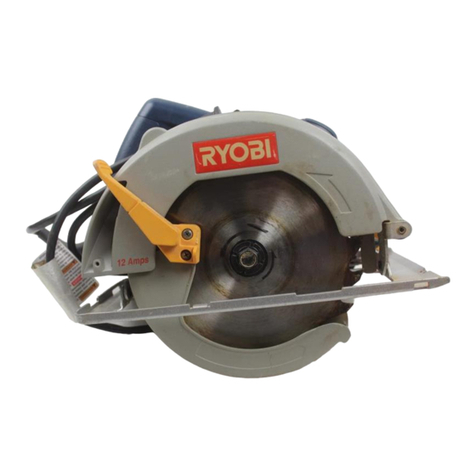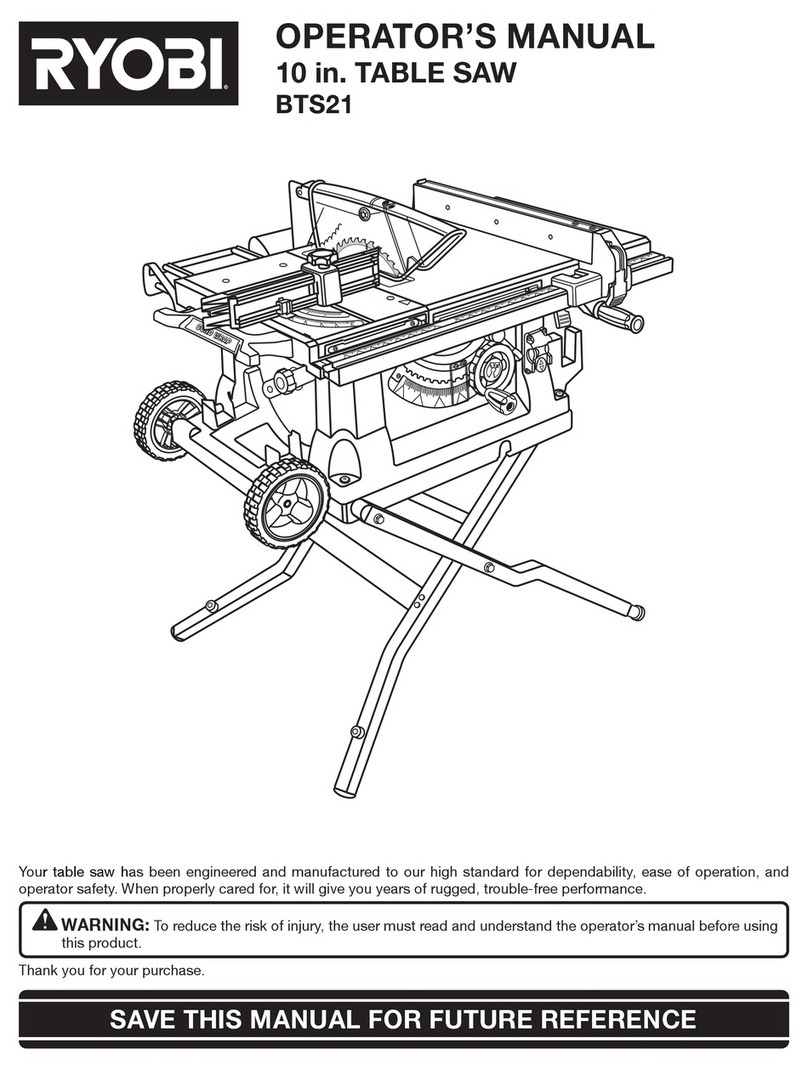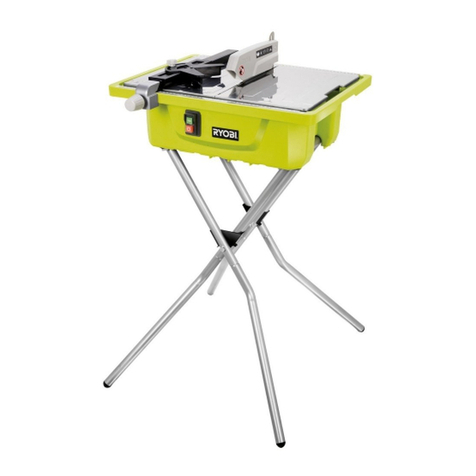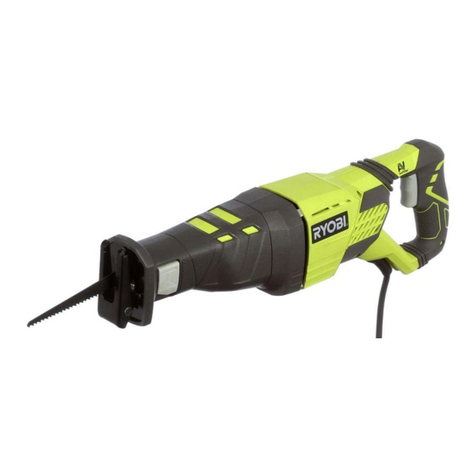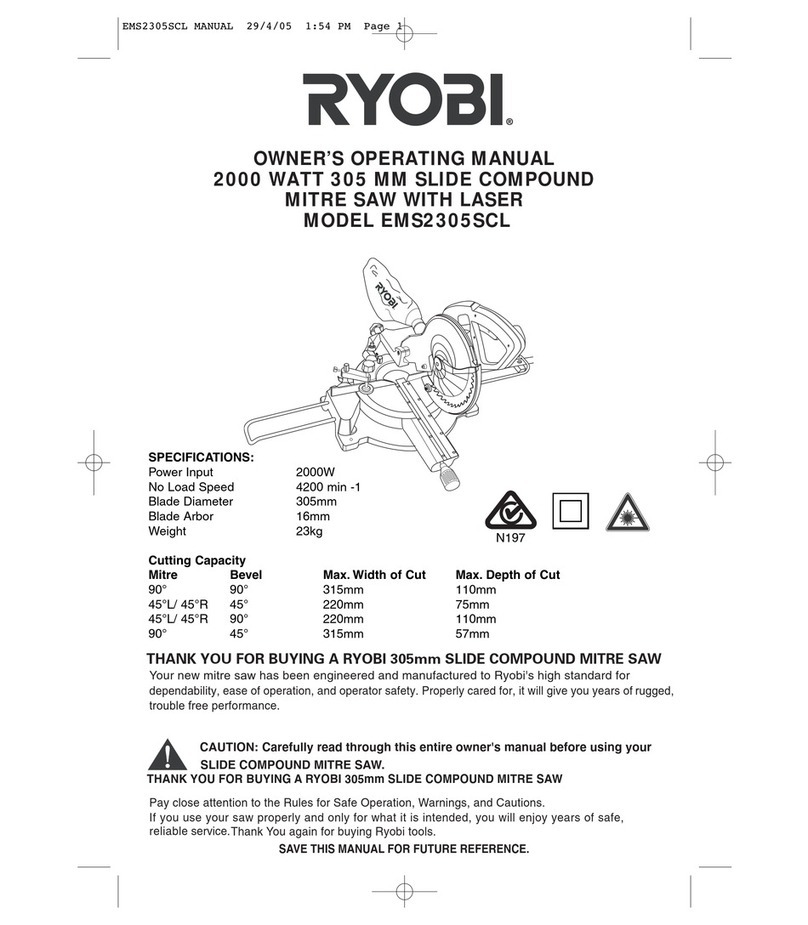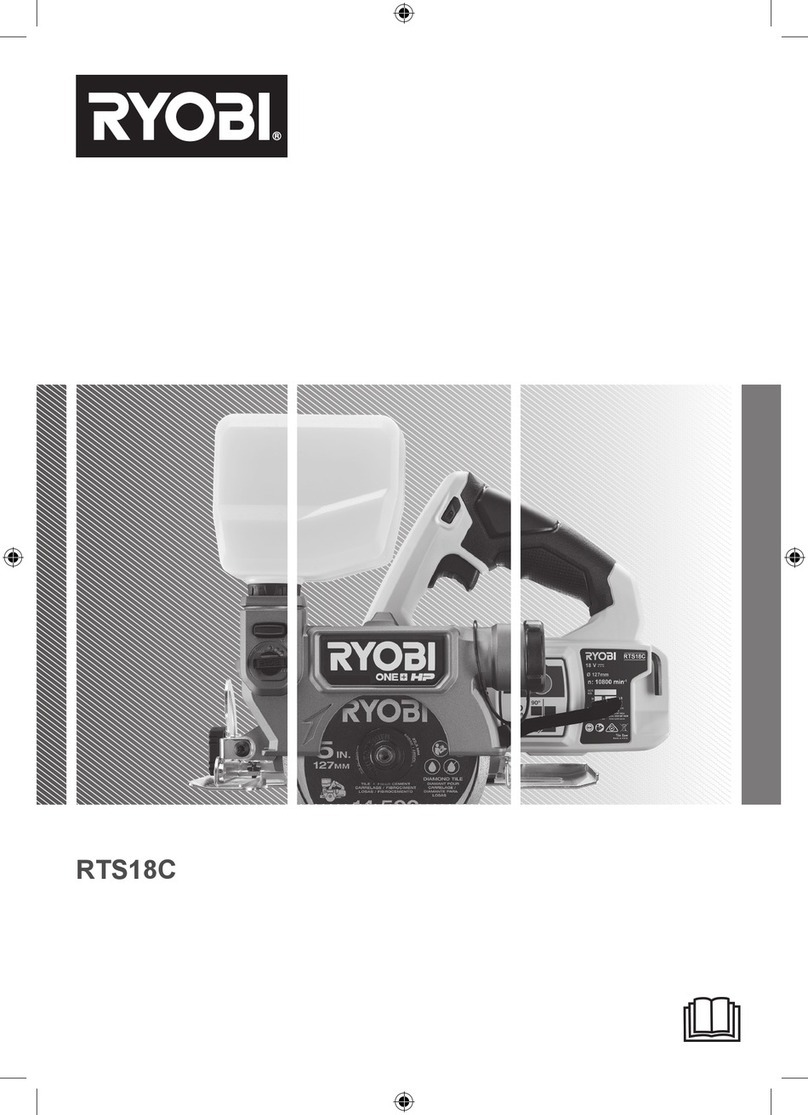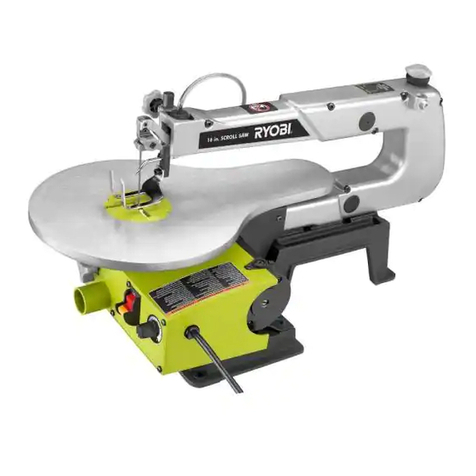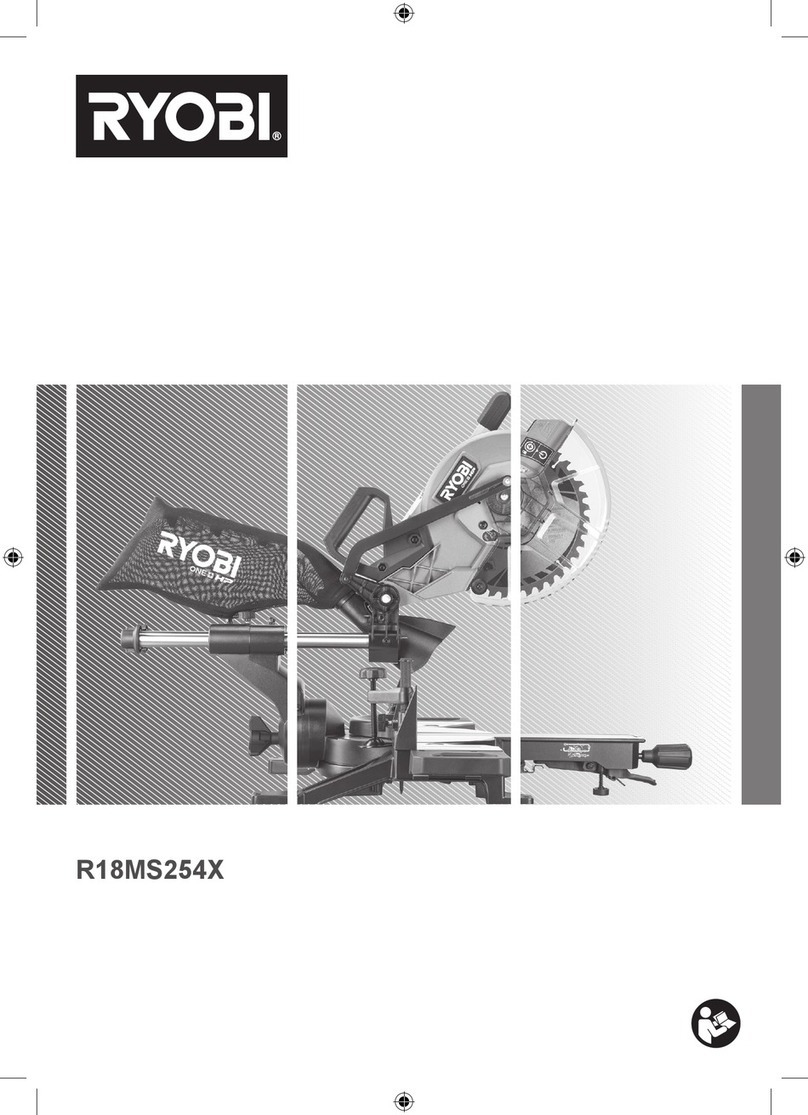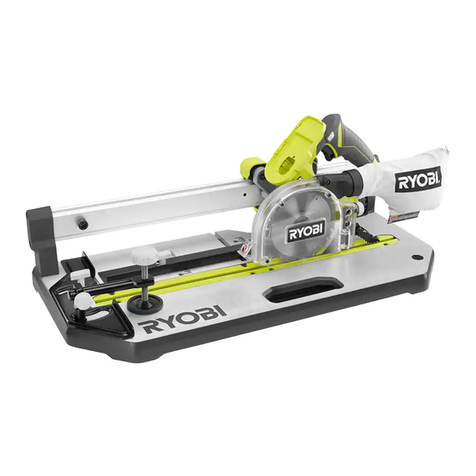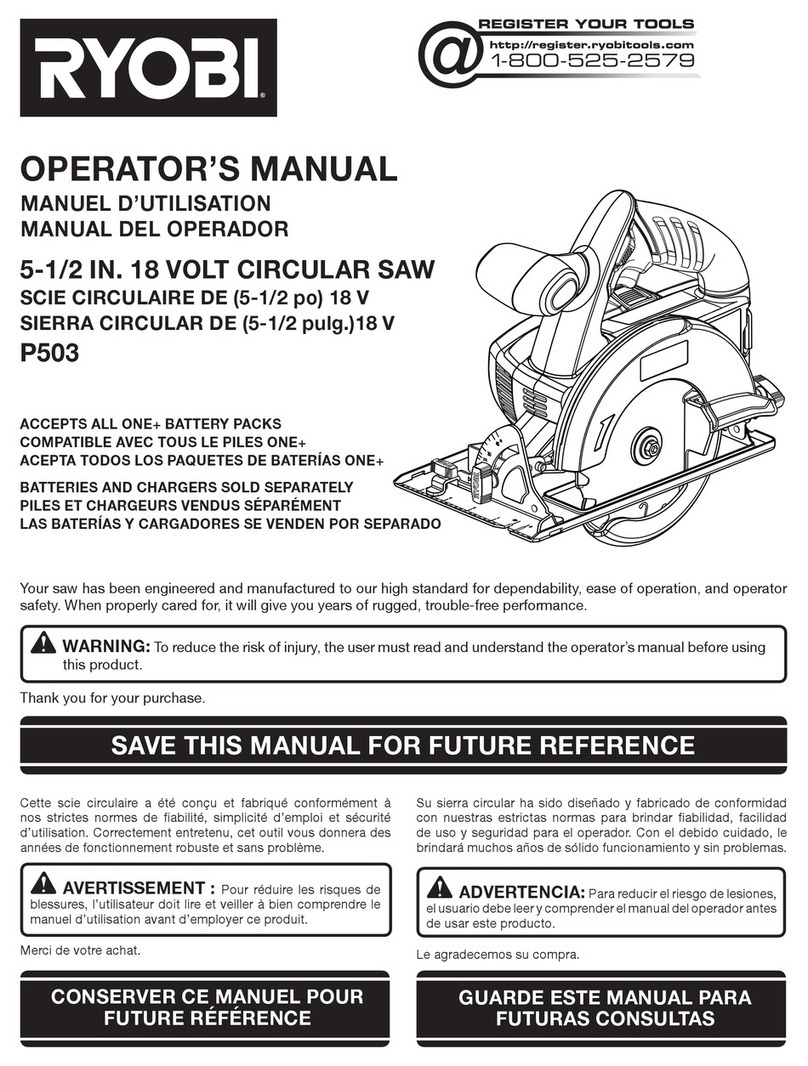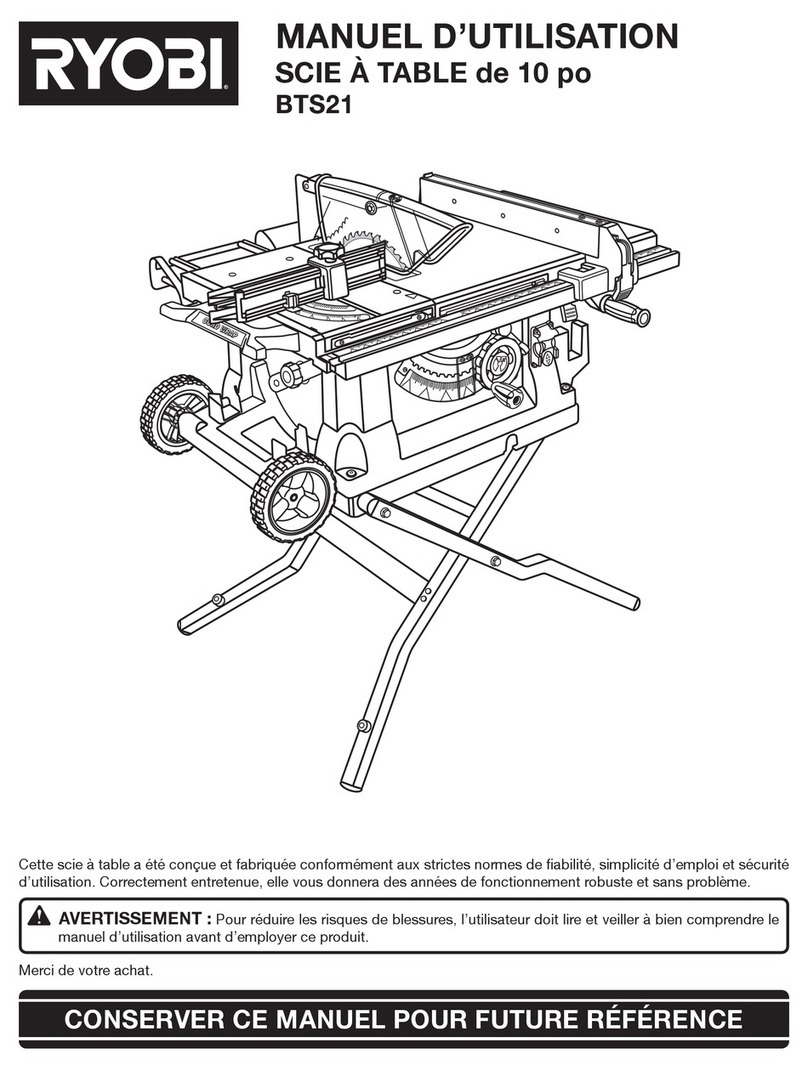10
etc., all tools should be disconnected from power
source.
■Avoid accidental starting. Be sure switch is off when
plugging in any tool.
■Use recommended accessories. Consult the
operator’s manual for recommended accessories. The
use of improper accessories may result in injury.
■Never stand on tool. Serious injury could occur
if the tool is tipped or if the blade is unintentionally
contacted.
■Check for damaged parts. Check for alignment of
moving parts, binding of moving parts, breakage of
parts, mounting and any other conditions that may
affect its operation. A guard or other part that is
damaged must be properly repaired or replaced by
an authorised service centre to avoid risk of personal
injury.
■Use the right direction of feed. Feed work into a
blade or cutter against the direction or rotation of the
blade or cutter only.
■Never leave tool running unattended. Turn the
power off. Don't leave tool until it comes to a complete
stop.
■Do not abuse cord. Never carry tool by the cord or
yank it to disconnect from receptacle. Keep cord away
from heat, oil, and sharp edges.
■Use outdoor extension cords. When tool is used
outdoors, use only extension cords with approved
ground connection that are intended for use outdoors
and so marked.
■Protect your lungs. Wear a face or dust mask if the
cutting operation is dusty.
■Protect your hearing. Wear hearing protection during
extended periods of operation.
■Blade coasts after being turned off.
■Never use in an explosive atmosphere. Normal
sparking of the motor could ignite fumes.
■Inspect tool cords periodically. If damaged,
have repaired by a qualified service technician at
an authorised service facility. The conductor with
insulation having an outer surface that is green with
or without yellow stripes is the equipment-grounding
conductor. If repair or replacement of the electric cord
or plug is necessary, do not connect the equipment-
grounding conductor to a live terminal. Repair or
replace a damaged or worn cord immediately. Stay
constantly aware of cord location and keep it well
away from the rotating blade.
■Inspect extension cords periodically and replace if
damaged.
■Ground all tools. If tool is equipped with three-prong
plug, it should be plugged into a three-hole electrical
receptacle.
■Check with a qualified electrician or service
GENERAL POWER TOOL SAFETY WARNINGS
WARNING
When using electric tools, basic safety precautions
should always be followed to reduce the risk of re,
electric shock and personal injury.
Read all these instructions before attempting to
operate this product and save these instructions.
■Know your power tool. Read the operator’s manual
carefully. Learn the applications and limitations as well
as the specific potential hazards related to this tool.
■Guard against electrical shock by preventing body
contact with grounded surfaces. For example: pipes,
radiators, ranges, refrigerator enclosures.
■Keep guards in place and in good working order.
■Remove adjusting keys and wrenches. Form habit
of checking to see that keys and adjusting wrenches
are removed from tool before turning it on.
■Keep work area clean. Do not leave tools or pieces
of wood on the saw while it is in operation.
■Do not use in dangerous environments. Do not use
power tools near gasoline or other flammable liquids,
in damp or wet locations or expose them to rain. Keep
the work area well lit.
■Keep children and visitors away. All visitors should
wear safety glasses and be kept a safe distance from
work area.
■Make workshop childproof with padlocks, master
switches, or by removing starter keys.
■Don’t force the tool. It will do the job better and safer
at the feed rate for which it was designed.
■Use the right tool. Do not force the tool or attachment
to do a job for which it was not designed.
■Dress properly. Do not wear loose clothing, gloves,
neckties, or jewellery. They can get caught and draw
you into moving parts. Rubber gloves and nonskid
footwear are recommended when working outdoors.
Also wear protective hair covering to contain long hair.
■Always wear safety glasses with side shields.
Everyday eyeglasses have only impact-resistant
lenses; they are not safety glasses.
■Secure work. Use clamps or a vice to hold work when
practical. It is safer than using your hand and frees
both hands to operate the tool.
■Don’t overreach. Keep proper footing and balance at
all times.
■Maintain tools with care. Keep tools sharp and clean
for better and safer performance. Follow instructions
for lubricating and changing accessories.
■Disconnect tools. When not in use, before servicing,
or when changing attachments, blades, bits, cutters,
